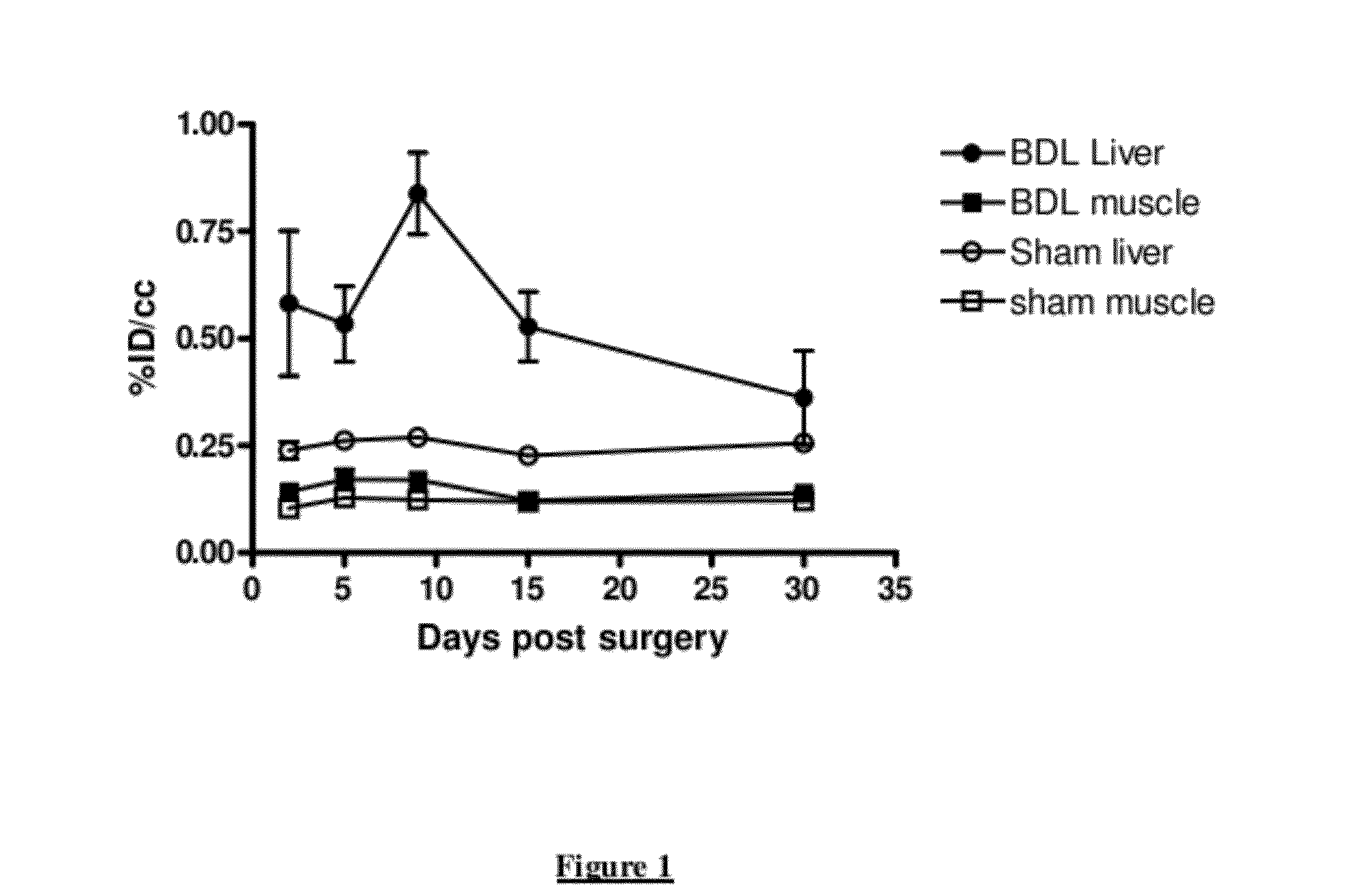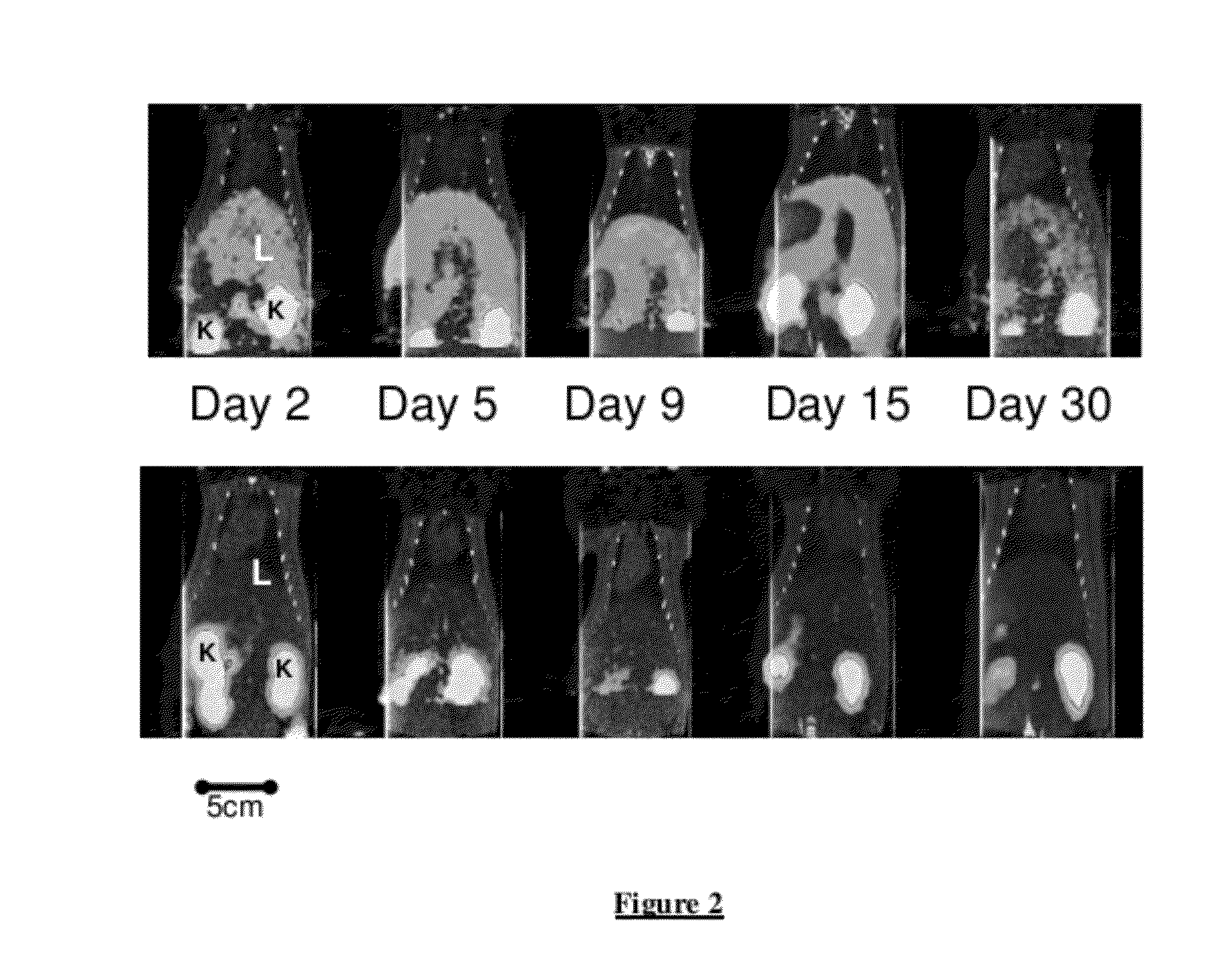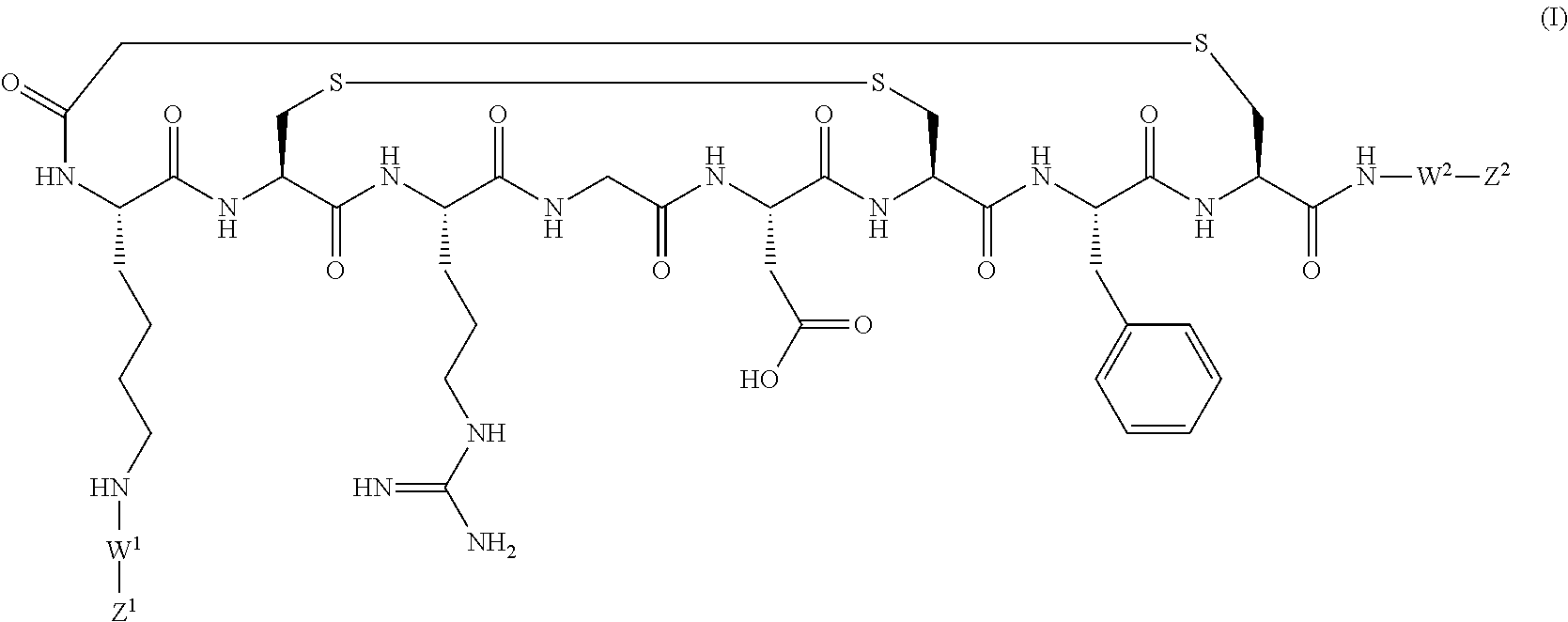Pet imaging of fibrogenesis
a fibrogenesis and pet imaging technology, applied in the field of peptide compounds, can solve the problems of unsuitable in vivo liver imaging optimal, and achieve the effect of most efficacious treatmen
- Summary
- Abstract
- Description
- Claims
- Application Information
AI Technical Summary
Benefits of technology
Problems solved by technology
Method used
Image
Examples
example 1
Binding to Membranes Prepared from EA-Hy926 Cells
[0048]The inhibition constant was measured using a previously-described membrane binding assay (Indrevoll et al, Bioorg & Med Chem Lett, 2006, 16, 6190-6193).
In brief, membranes from the human endothelial adenocarcinoma cell line EA-Hy926 were prepared and the Kd calculated for the purified membrane fraction. A competitive binding assay was then established to measure inhibition constants. 125I-echistatin (GE Healthcare; Code IM304) was used as the labelled ligand and cold echistatin as a reference standard.
A total of sixteen dilutions of cold test compound (either cold echistatin or cold PET tracer) were prepared and mixed with a combination of 125I-echistatin and membrane prior to incubation for 1 hour at 37° C. Following several washes, the bound material was harvested on a filter using a Skatron micro harvester. The filterspots were finally excised and counted in a Packard γ-counter.
PET tracer 1 (prepared by the method described b...
example 2
Bile Duct Ligation (BDL) and Sham Animals
2(i) Animal Model Set-Up
[0049]Outbred male Sprague Dawley rats (180-200 g; Charles River) were used in all bile duct ligation (BDL) and sham studies. After 6 days acclimatization rats were divided into 2 groups (BDL group and sham group).
For the BDL animals, the abdomen was shaved and swabbed with betadine solution followed by 5 mg / kg carprofen subcutaneously (s.c.) and 5 mg / kg bupronorphine s.c. and under Isoflurane anaesthesia a mid-line laparotomy was performed and the common bile duct located. Bile duct was double ligated, the first ligation made between the junction of the hepatic ducts and the second above the entrance of the pancreatic ducts.
The second group (sham animals) abdomen was shaved and swabbed with betadine solution followed by 5 mg / kg carprofen s.c. and 5 mg / kg bupronorphine s.c. Animals underwent sham surgery where bile duct was manipulated and a suture passed under the bile duct.
Before closing 2-3 ml saline was administere...
example 3
Longitudinal Imaging Studies of PET Tracer 1
[0051]For assessment of PET Tracer 1 in the BDL rat model, static PET images were acquired longitudinally (imaged at 60-90 minutes post-injection) at days 2, 5, 9, 15 and 30 post bile duct ligation surgery or sham surgery. The PET images were co-registered with corresponding CT images.
Prior to the PET image commencing, the histogram and acquisition parameters were inputted into microPET Manager (software controlling data acquisition and processing). The reconstruction parameters were set as follows:[0052]Fourier rebinning algorithm[0053]2D Filter Back Projection with Ramp filter[0054]Image zoom of 2[0055]Scatter correction chosen[0056]Raw image list mode data was saved in Intel / VAX-4-byte float format.
Reconstructed data was saved in .img format (native)
For the image acquisition the parameters were set as follows:[0057]1800 second acquisition (static at 60-90 minutes post-injection)[0058]1 bed position only[0059]Energy windows set at 350-75...
PUM
| Property | Measurement | Unit |
|---|---|---|
| energy | aaaaa | aaaaa |
| temperature | aaaaa | aaaaa |
| time | aaaaa | aaaaa |
Abstract
Description
Claims
Application Information
 Login to View More
Login to View More - R&D
- Intellectual Property
- Life Sciences
- Materials
- Tech Scout
- Unparalleled Data Quality
- Higher Quality Content
- 60% Fewer Hallucinations
Browse by: Latest US Patents, China's latest patents, Technical Efficacy Thesaurus, Application Domain, Technology Topic, Popular Technical Reports.
© 2025 PatSnap. All rights reserved.Legal|Privacy policy|Modern Slavery Act Transparency Statement|Sitemap|About US| Contact US: help@patsnap.com



